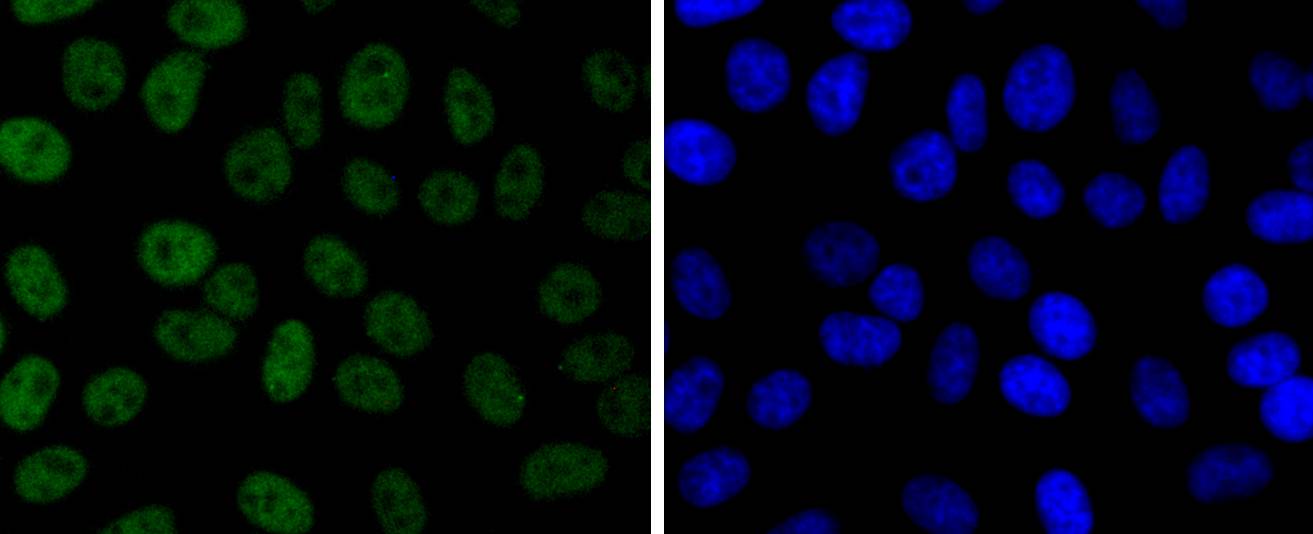Product Detail
Product NameJunD Rabbit mAb
Clone No.SD0830
Host SpeciesRecombinant Rabbit
Clonality Monoclonal
PurificationProA affinity purified
ApplicationsWB, ICC/IF, IP
Species ReactivityHu
Immunogen Descrecombinant protein
ConjugateUnconjugated
Other NamesActivator protein 1 antibody AP 1 antibody AP1 antibody Jun D antibody jun D proto oncogene antibody Jund antibody JunD FL isoform antibody JUND_HUMAN antibody Transcription factor jun D antibody Transcription factor jun-D antibody
Accession NoSwiss-Prot#:P17535
Uniprot
P17535
Gene ID
3727;
Calculated MW38/42 kDa
Formulation1*TBS (pH7.4), 1%BSA, 40%Glycerol. Preservative: 0.05% Sodium Azide.
StorageStore at -20˚C
Application Details
WB: 1:1,000-1:2,000
ICC: 1:50-1:200
ICC staining JunD in Hela cells (green). The nuclear counter stain is DAPI (blue). Cells were fixed in paraformaldehyde, permeabilised with 0.25% Triton X100/PBS.
ICC staining JunD in HepG2 cells (green). The nuclear counter stain is DAPI (blue). Cells were fixed in paraformaldehyde, permeabilised with 0.25% Triton X100/PBS.
The activator protein-1 (AP-1) transcription factor consists of either Jun/Jun homodimers or Fos/Jun heterodimeric complexes. Homo- and heterodimers bind to the TGACTCA consensus sequence present in numerous promoters and initially identified as the phorbol ester tumor promoter response element (TRE). Jun B and Jun D have been shown to be almost identical to c-Jun in their C-terminal regions, which are involved in dimerization and DNA binding, whereas their N-terminal domains, which are involved in transcriptional activation, diverge. All three form heterodimers among themselves and with c-Fos and other members of the Fos gene family. Studies suggest that the two forms of Jun D may be due to internal initiation of translation.
If you have published an article using product 49208, please notify us so that we can cite your literature.




 Yes
Yes



